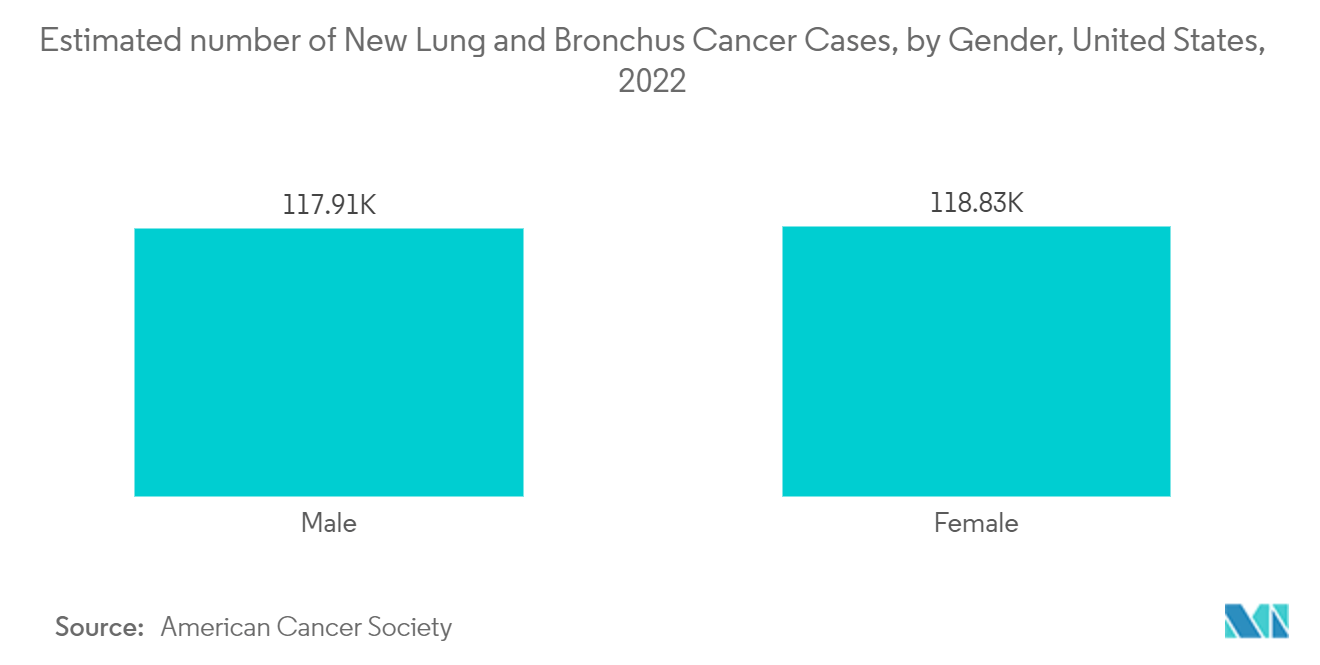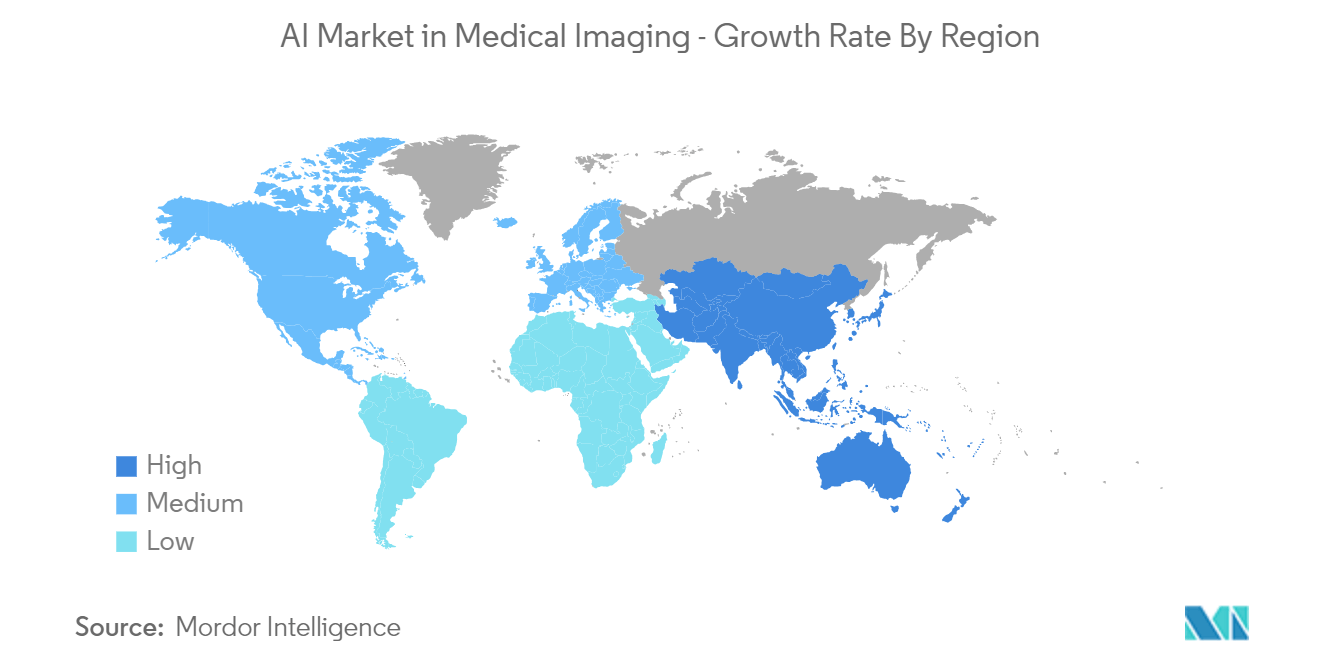Market Trends of AI In Medical Imaging Industry
Computed Tomography is Expected to Drive the Market Growth
- The major factors for the growth of the computed tomography (CT) market include the growing prevalence of various lifestyle-associated chronic diseases such as cancer and cardiovascular conditions and increasing demand for advanced imaging solutions integrated with AI and further investment in AI-enabled solutions are some of the factors expected to drive the overall market growth. Increasing demand for advanced assessment tools in the emergency department and a growing number of ambulatory emergency care units are the drivers expected to positively impact the CT market growth, which will boost the overall demand for the AI market in medical imaging.
- Image noise resulting from low-dose CT procedures causes a negative cascading effect on the quality, efficiency, and cost of imaging services. AI-based DLR and post-processing techniques are able to process CT images in a matter of seconds - to reduce image noise across a much broader range of doses and exam types than IR.
- According to the American Cancer Society, a total of 236,740 new cases of lung and bronchus cancer are estimated this year in the United States. Furthermore, a CT scan can help in showing the shape, size, and accurate position of any lung tumor and can even help in cases where there is a risk of developing lung cancer without the individual seeing any signs or symptoms of the disease.
- In computed tomography (CT), AI holds the promise of enabling further reductions in patient radiation dose through automation and optimization of data acquisition processes, including patient positioning and acquisition parameter settings. The players in the market are introducing advancements to cater to the rising need for CT scans in the studied market. For instance, in August 2022, Xoran Technologies announced that it received FDA 510(k) clearance for TRON, a truly mobile, full-body fluoroscopy, computed tomography (CT.) X-ray system. It is designed to provide safe, ultra-high-resolution, low-dose imaging in traditional settings such as the operating room, surgery center, and critical care unit.

Asia-Pacific to Witness Highest Growth
- In the Asia-Pacific, artificial intelligence in healthcare is expected to witness lucrative growth over the forecast period, owing to rising R&D expenditure and developments in the pharmaceutical and biotechnology sectors.
- Additionally, the presence of a significant patient pool will trigger demand for better healthcare services, develop healthcare infrastructure, and increase disposable income to support further the growth of AI in Medical Imaging in the region. Furthermore, spending in the healthcare sector gained heightened traction. Economies in the region are increasingly concentrating on developing a robust healthcare infrastructure for patient diagnoses and treatment. According to Invest India, India's hospital sector, accounting for 80% of the total healthcare market, is observing significant investor interest from both global and domestic investors.
- Furthermore, AI medical imaging is one of the most common AI applications in the healthcare industry in China. It is currently the second-largest market segment of AI medical applications in China and was predicted to witness a growth rate of more than 40% and reach a scale of USD 2.5 billion in 2024. There is a considerable gap in the number of professional doctors in medical imaging in China. The medical imaging dataset increases by 30% every year in China, which also accounts for 90% of the digital data volume for a hospital. In contrast, the number of radiologists increases by only 4% a year. AI medical imaging in China is considered by industry insiders to be the first market to commercialize AI in the healthcare industry in China.
- The spread of COVID-19 has urged medical technology-related companies to shift to commercial production of equipment rapidly. Under normal conditions, companies are centering on activities such as approaching customers. Amid the abrupt increase in demand for medical examinations, new services such as online hospitals, temperature checks by AI, remote medical care, and delivery of drugs via the Internet are rapidly moving toward practical use.
- COVID-19 has brought a lot of awareness to the medical industry in the region. According to a new radiology industry study released by Royal Philips, eight out of ten radiologists in Singapore, Australia, and South Korea (80%) believed that artificial intelligence (AI) is expected to be integrated into their current clinical workflow, enabling more confident diagnosis and data processing.


